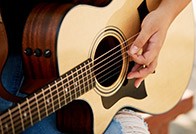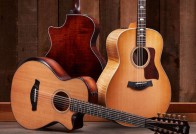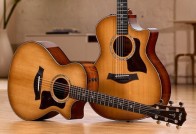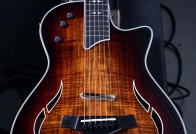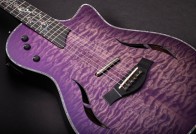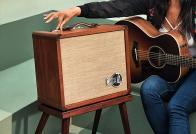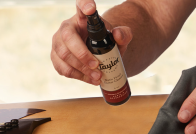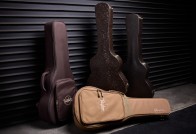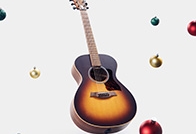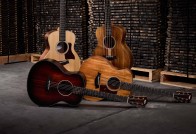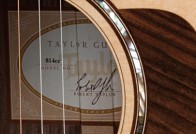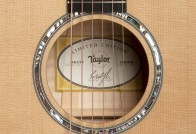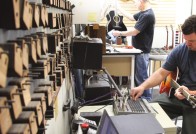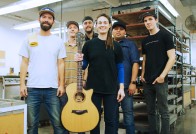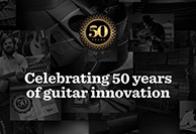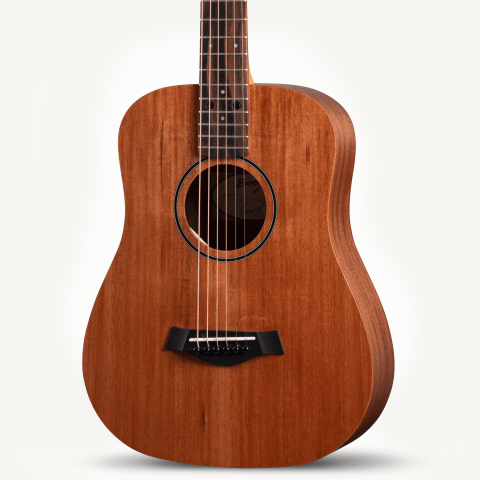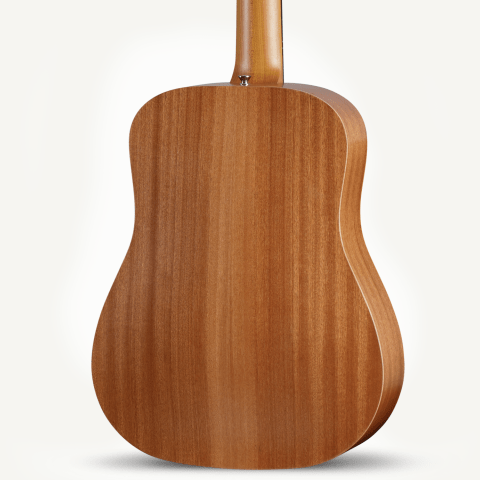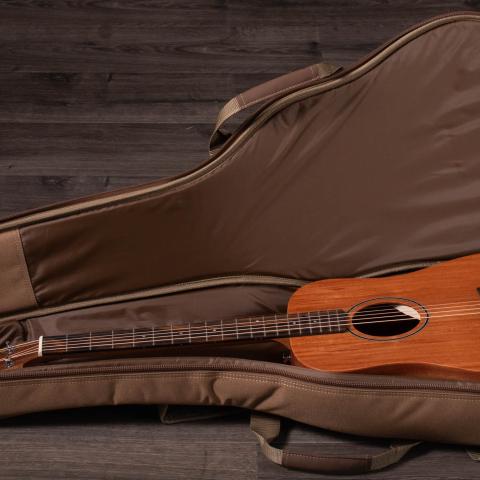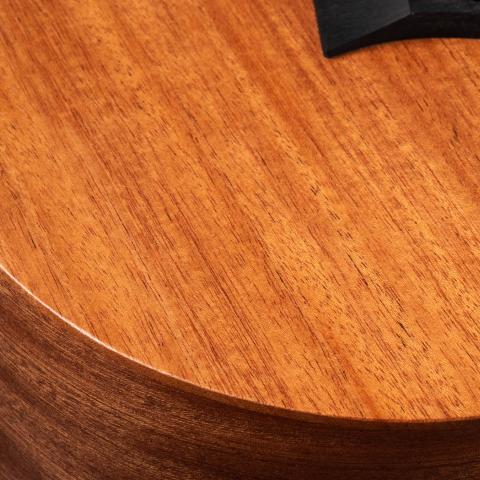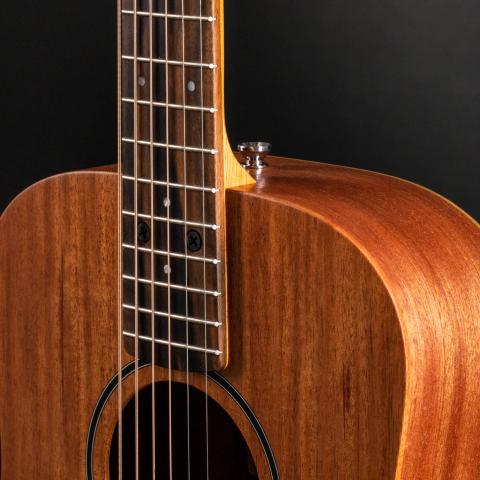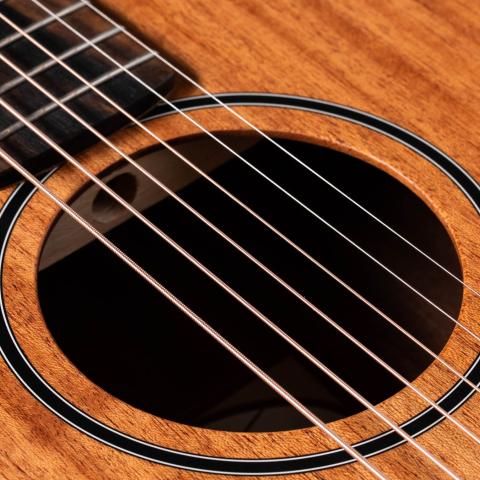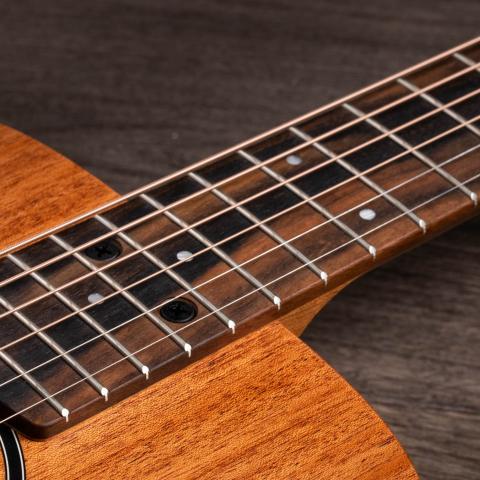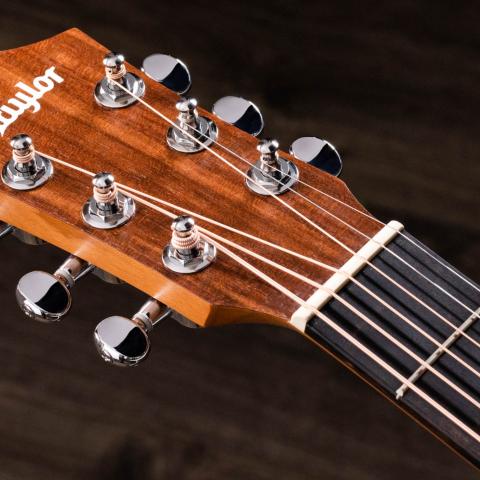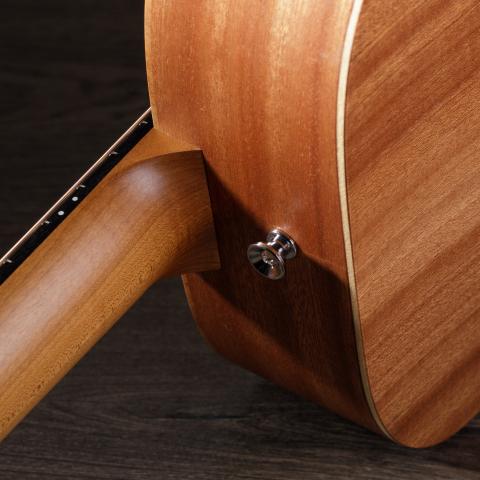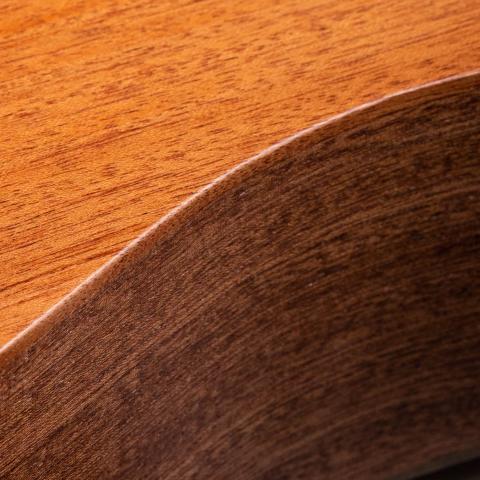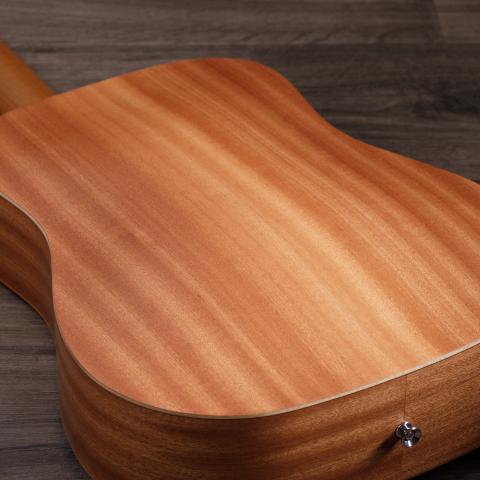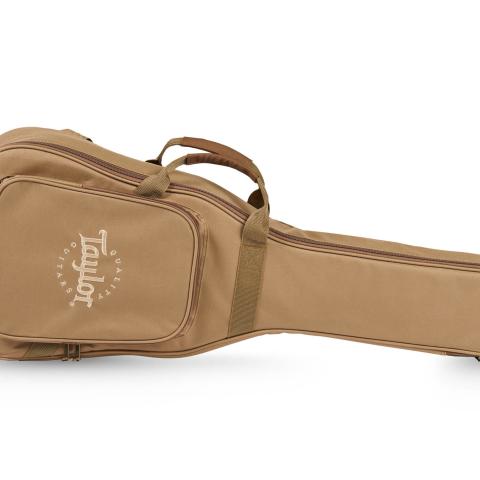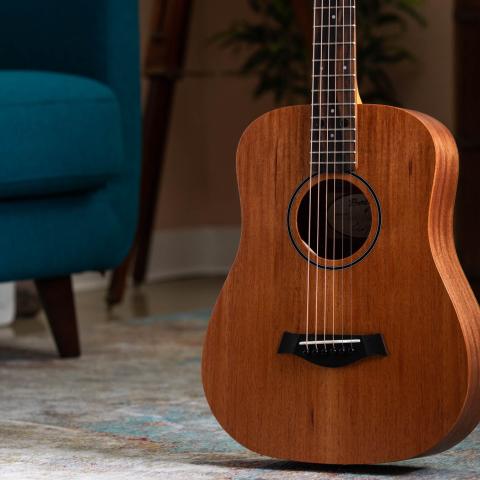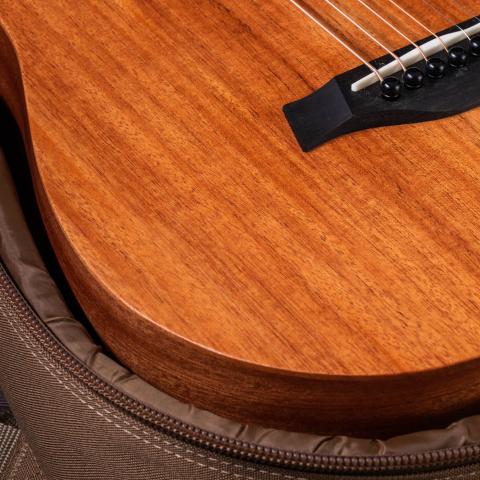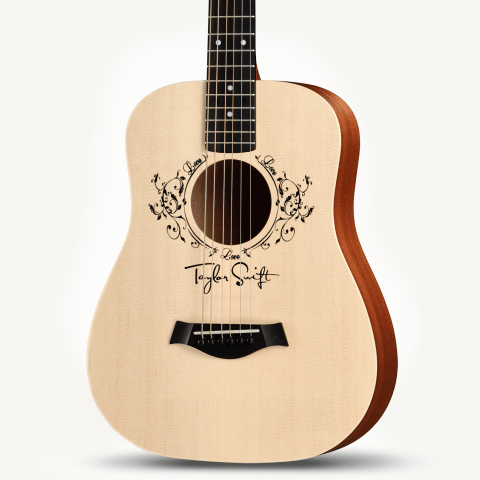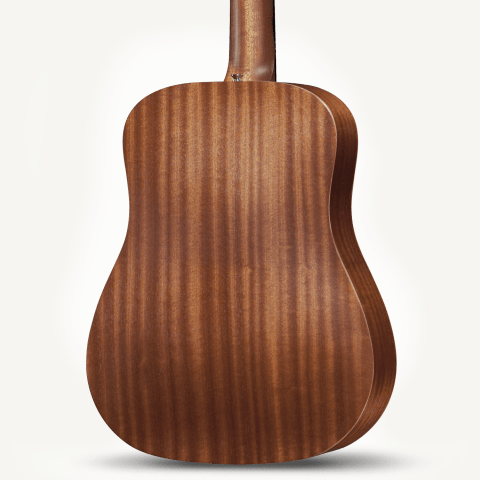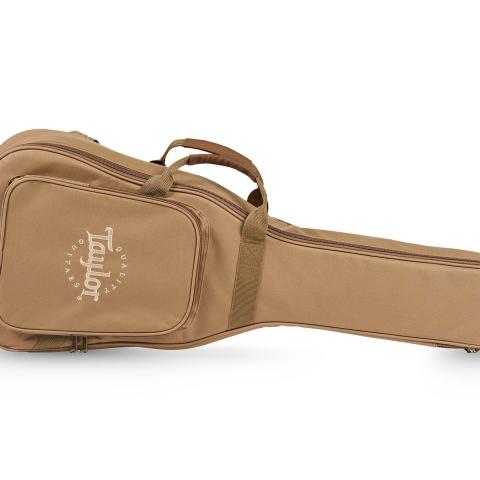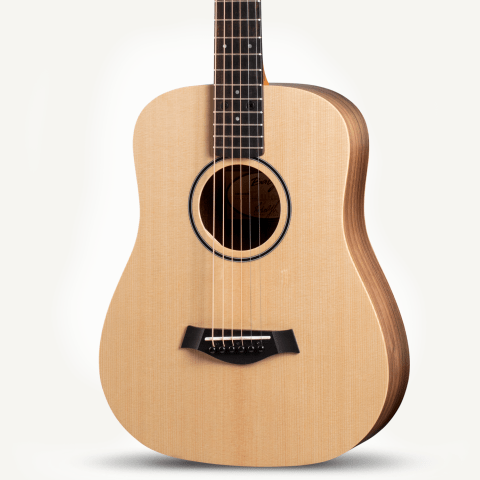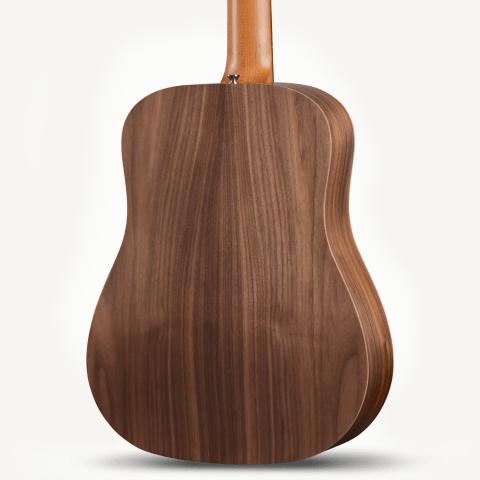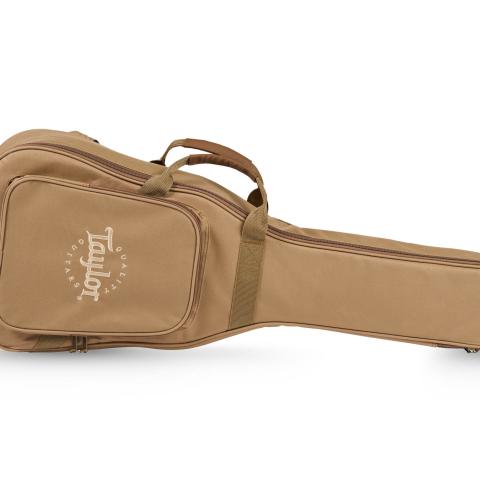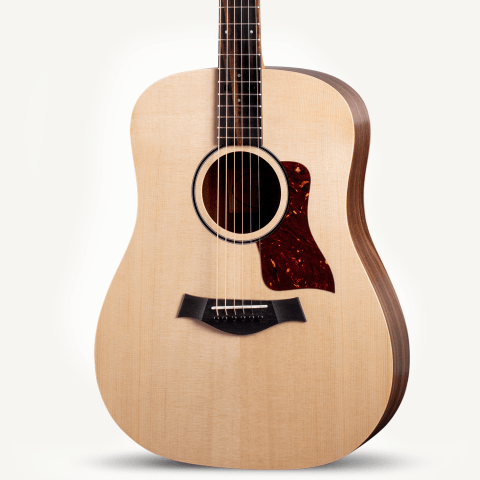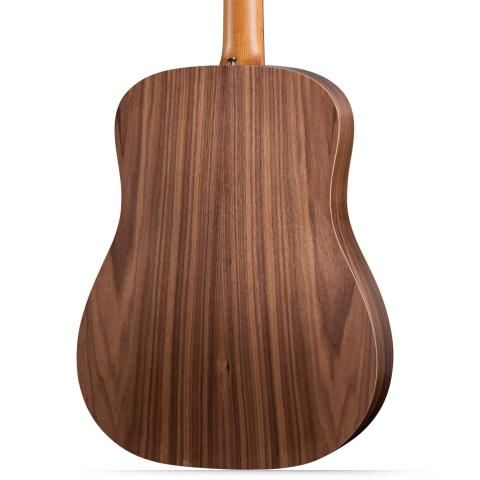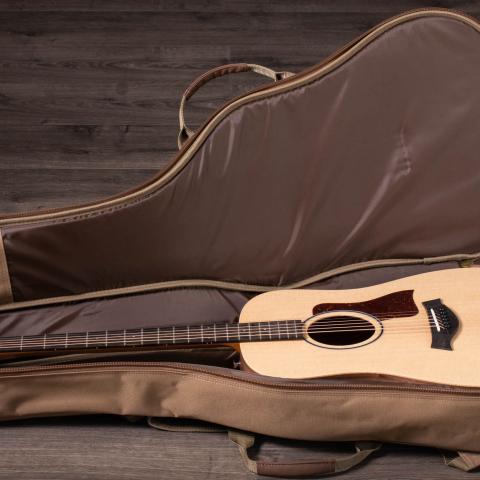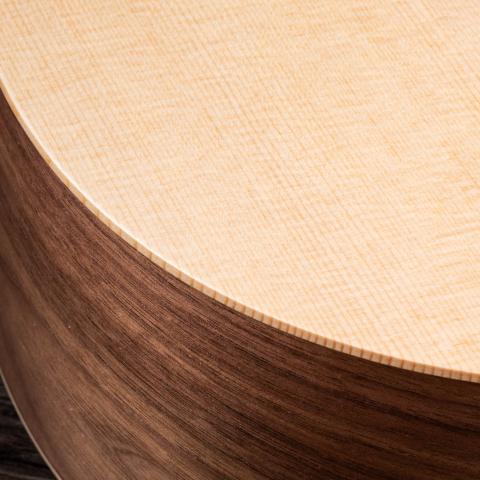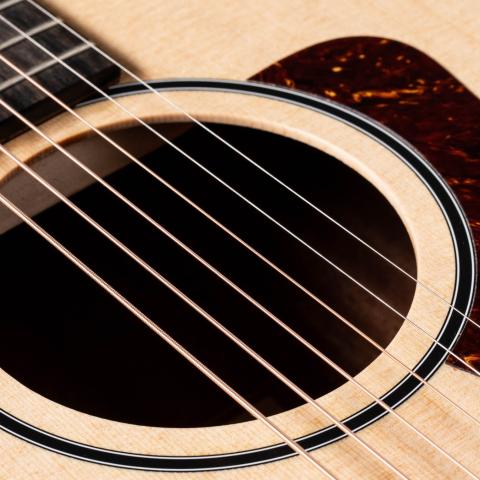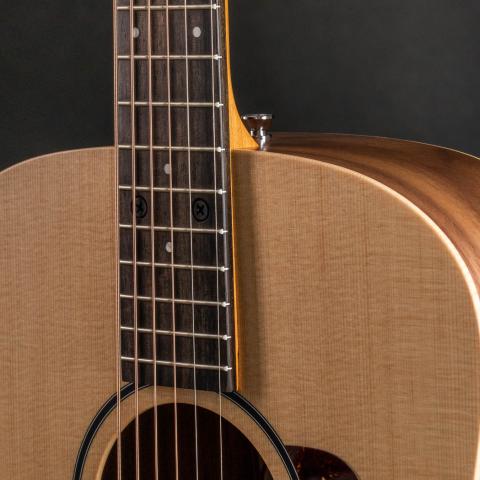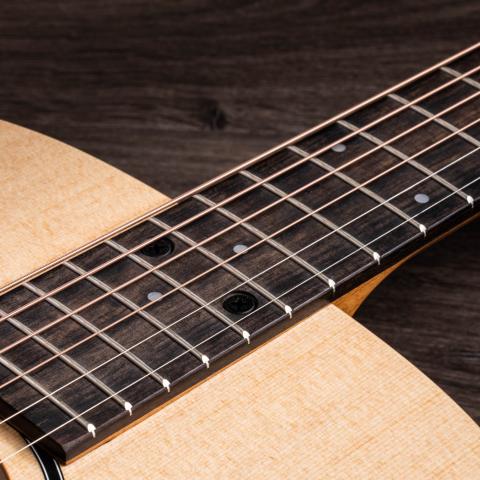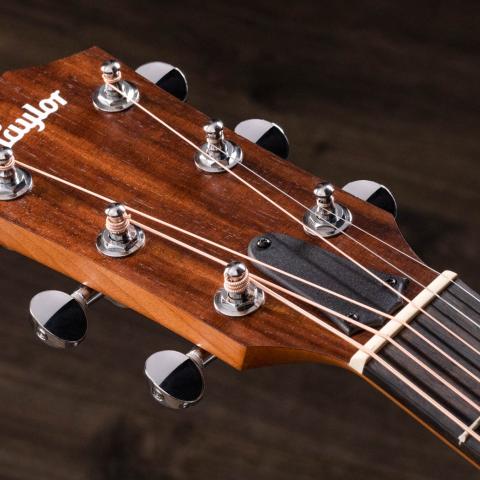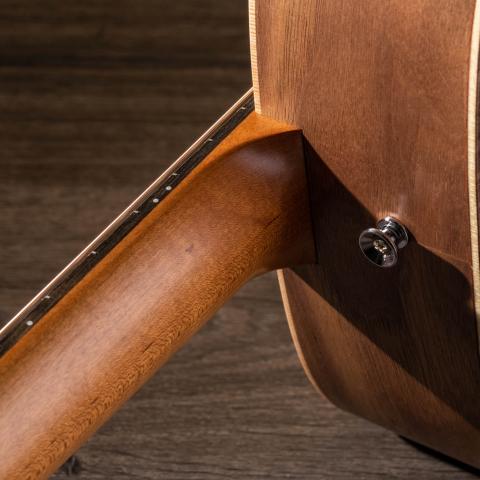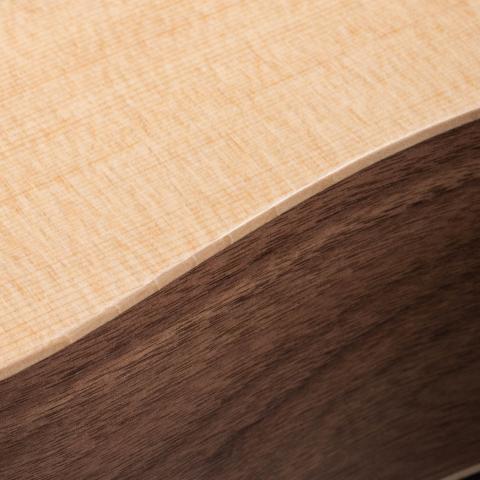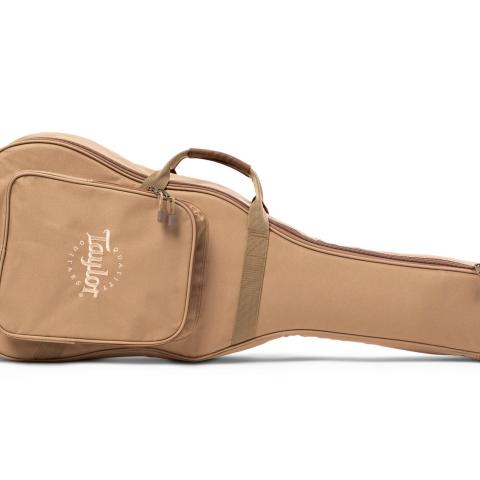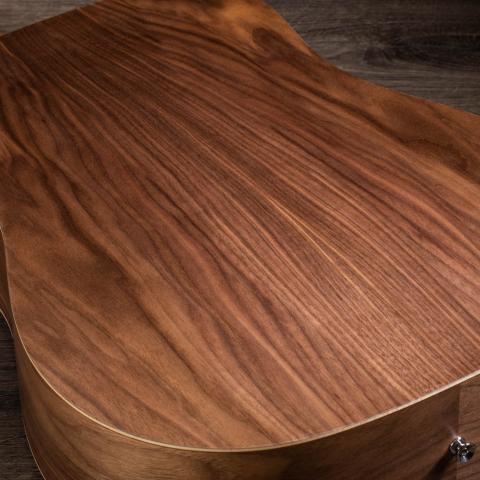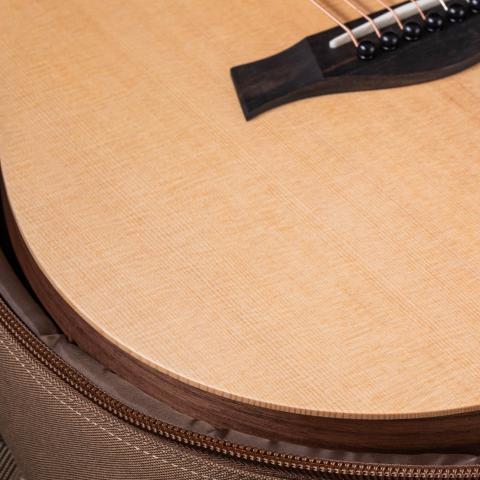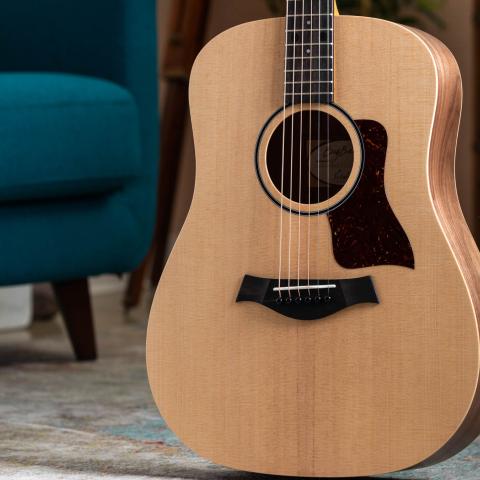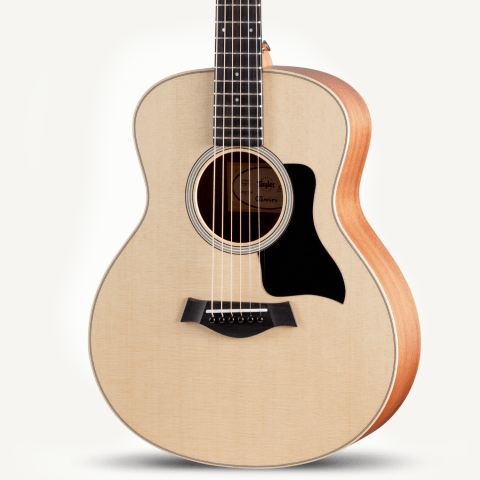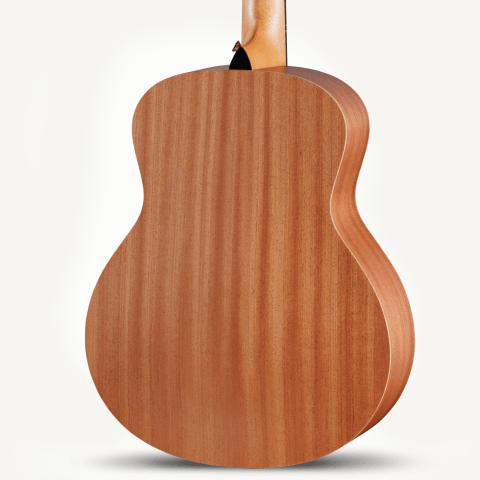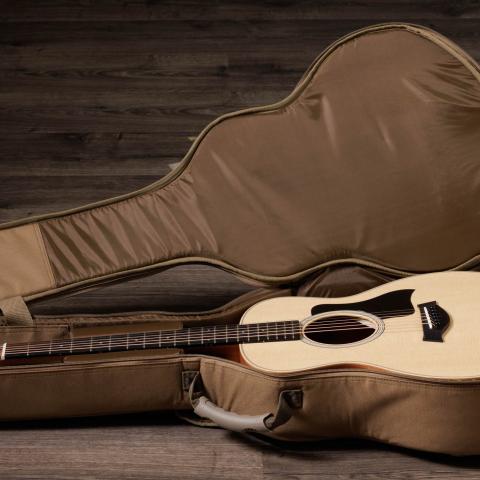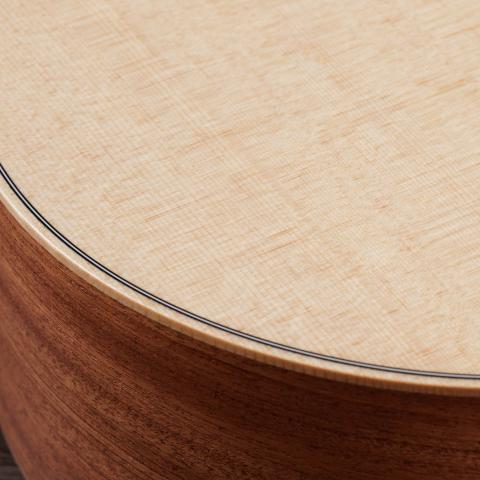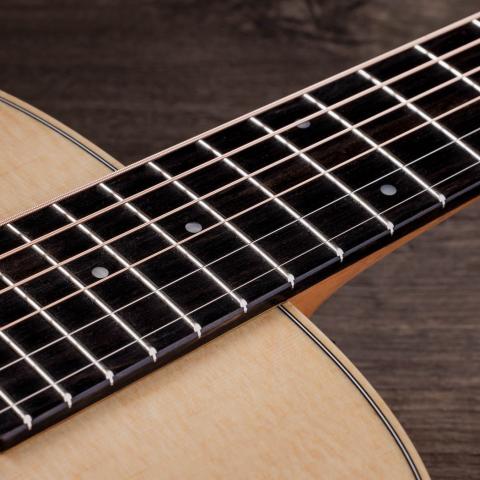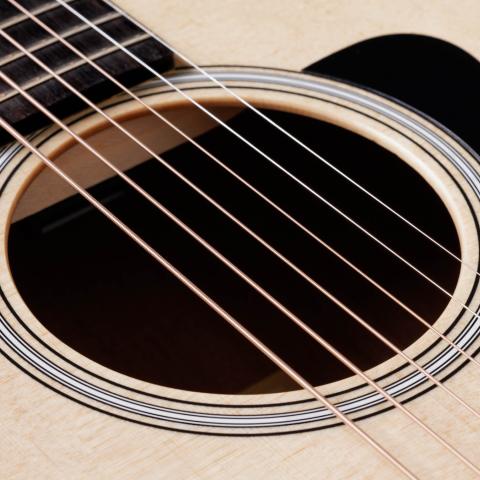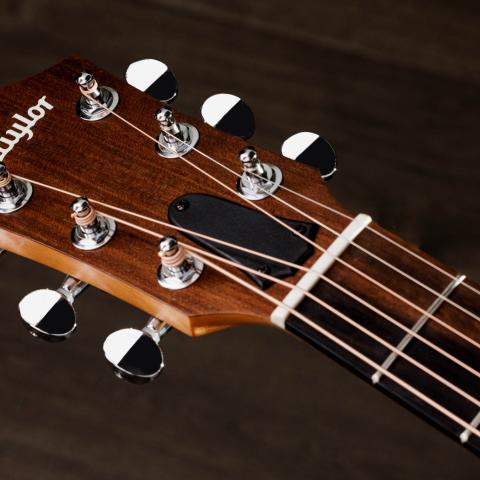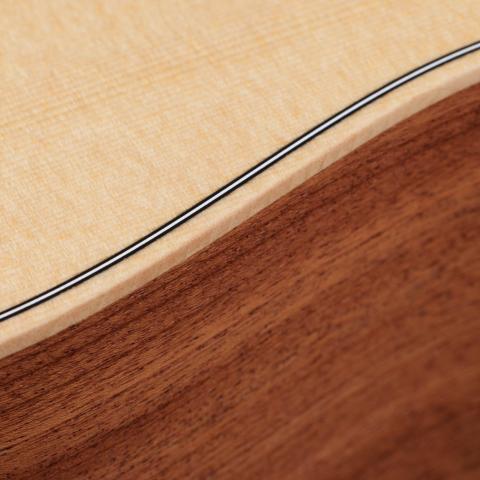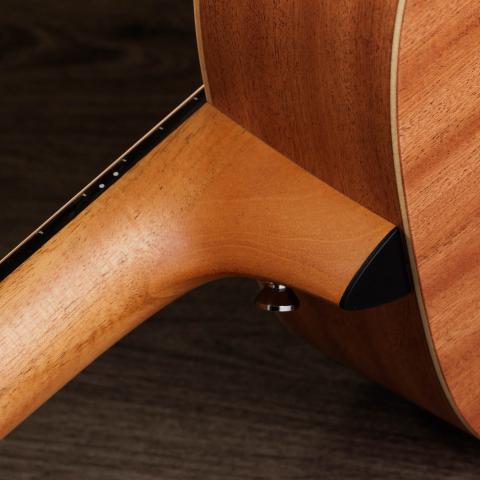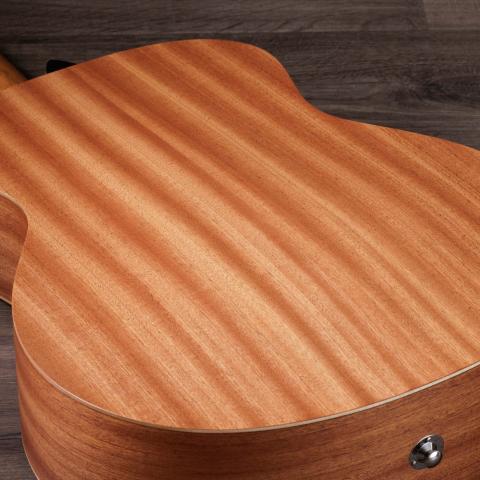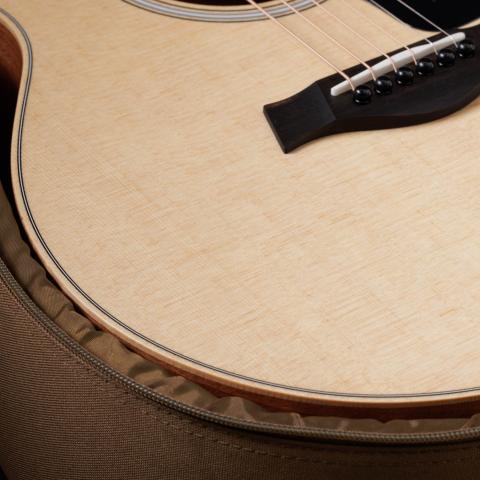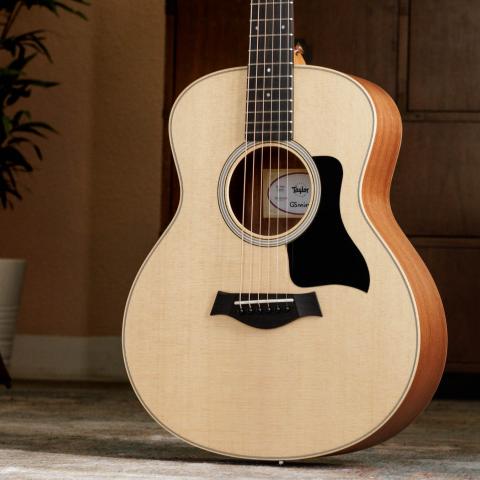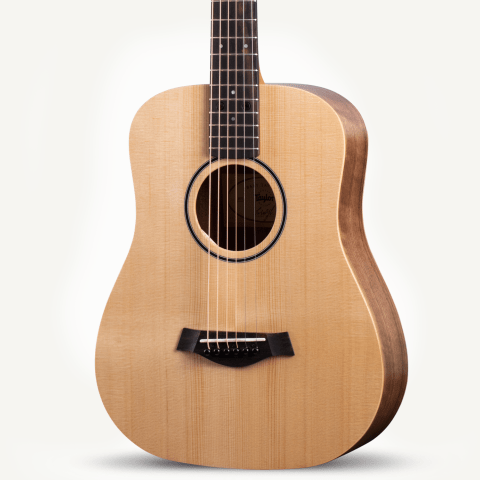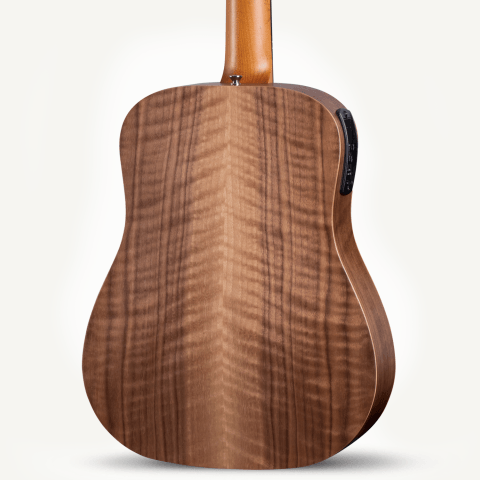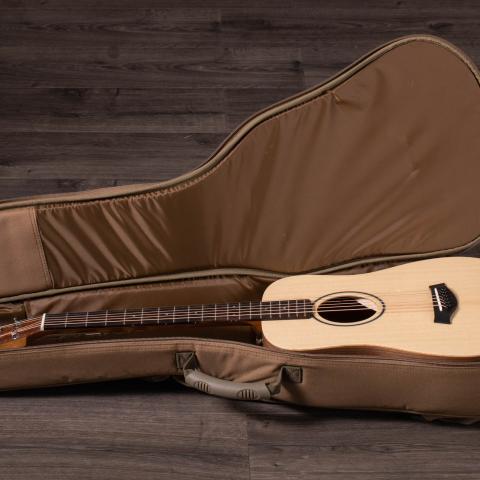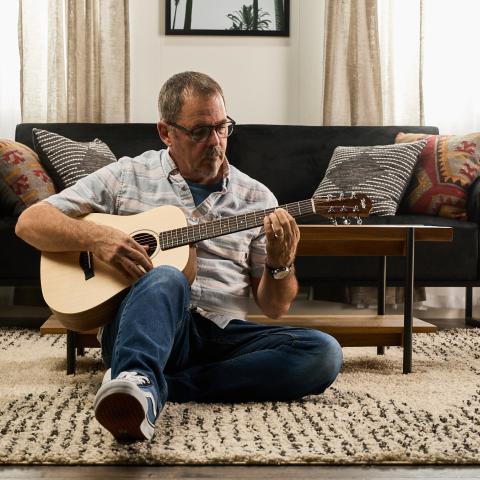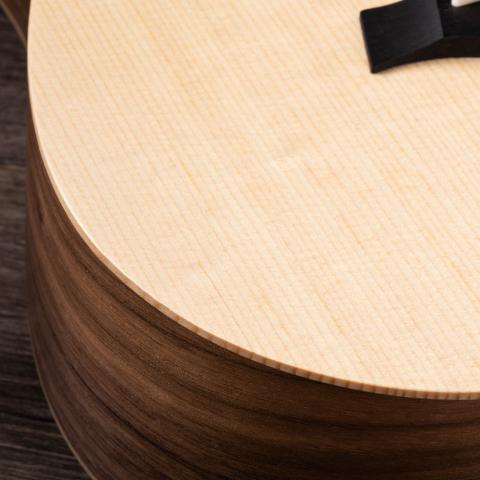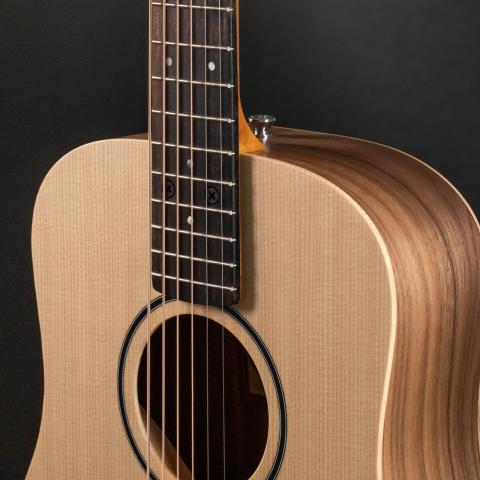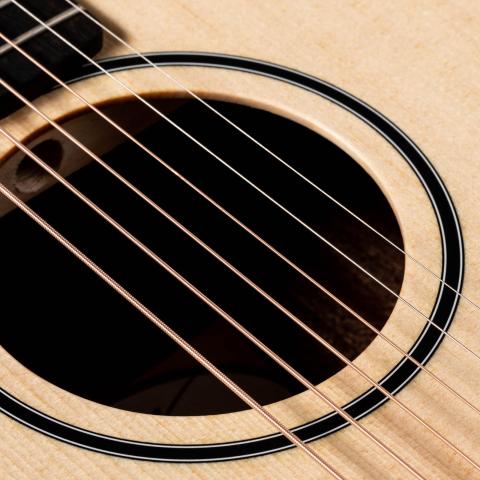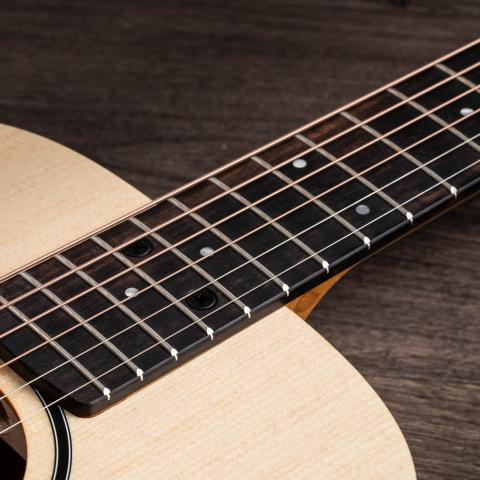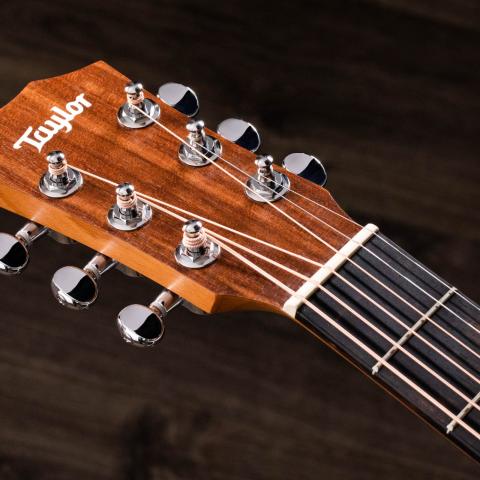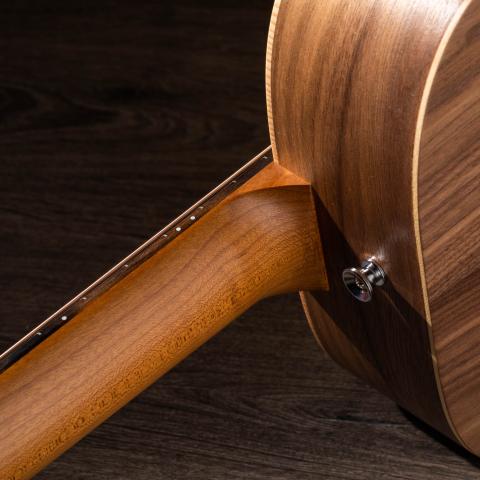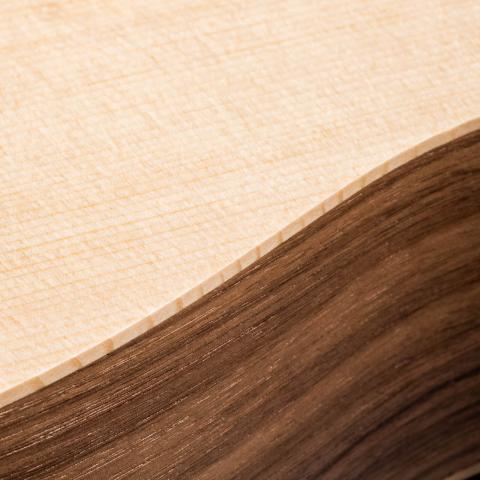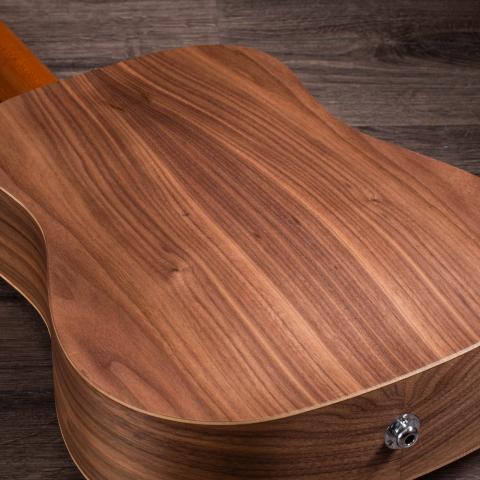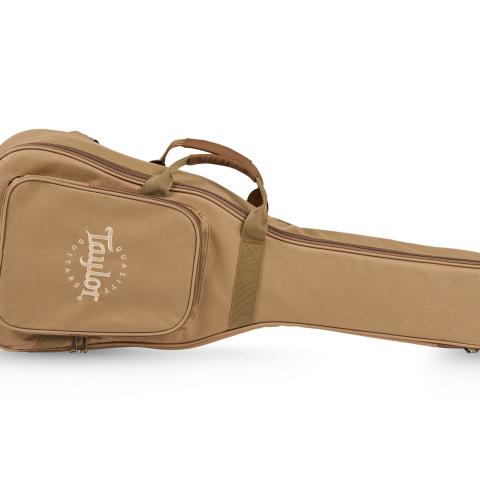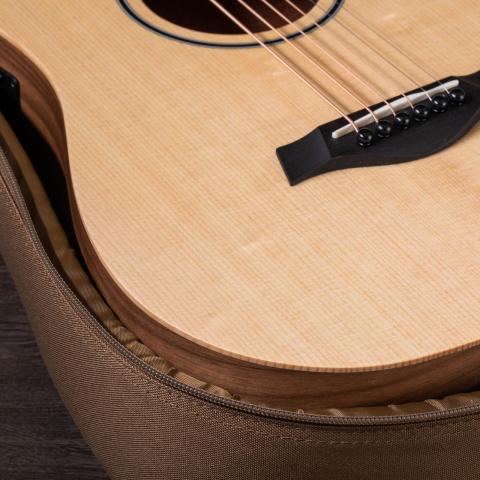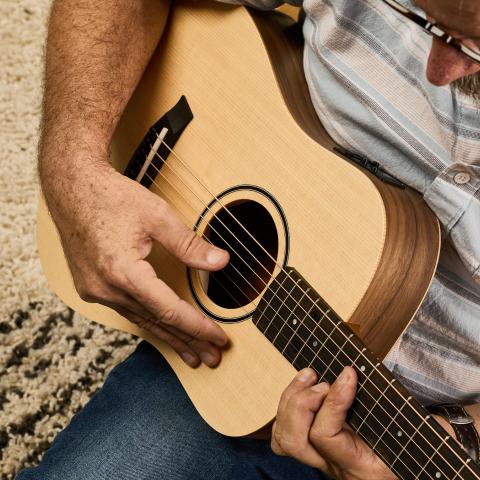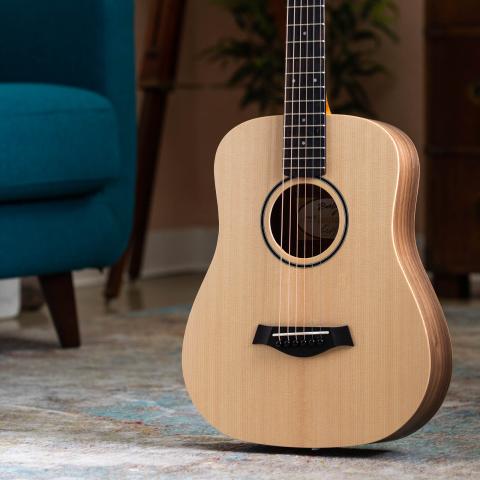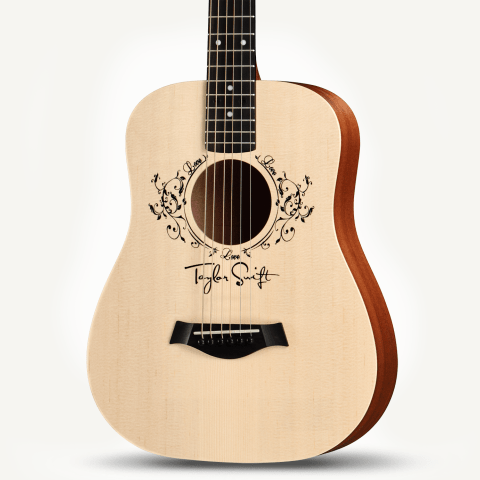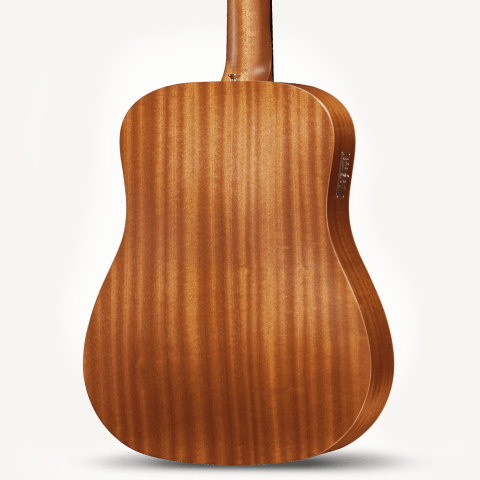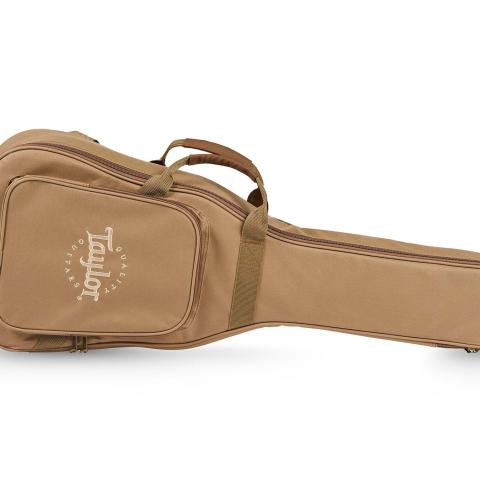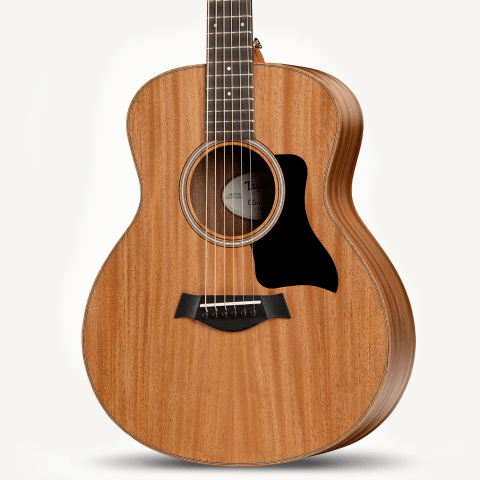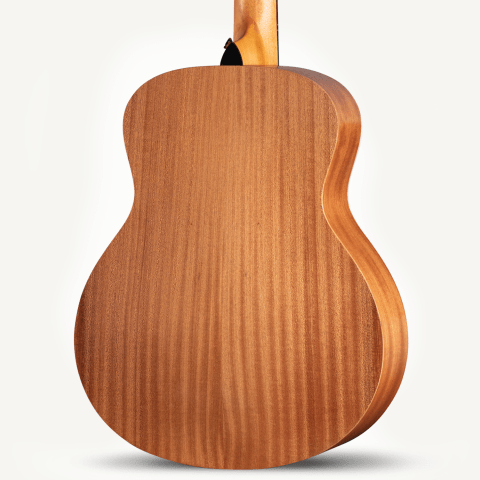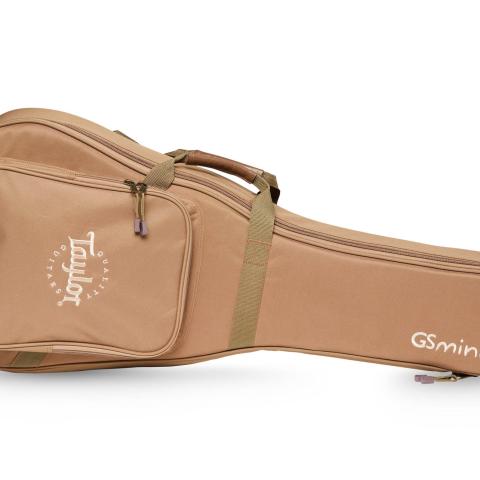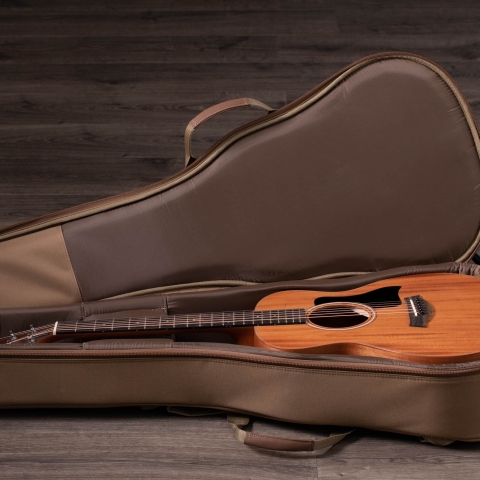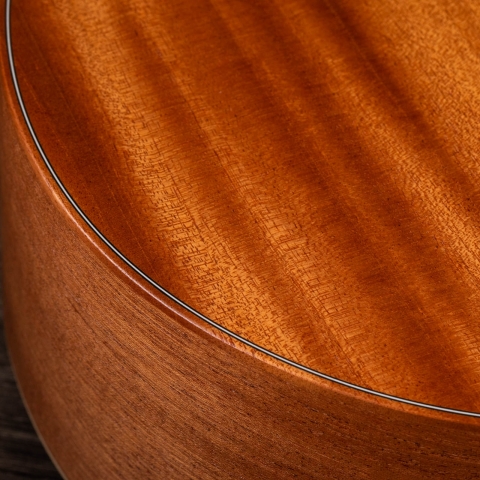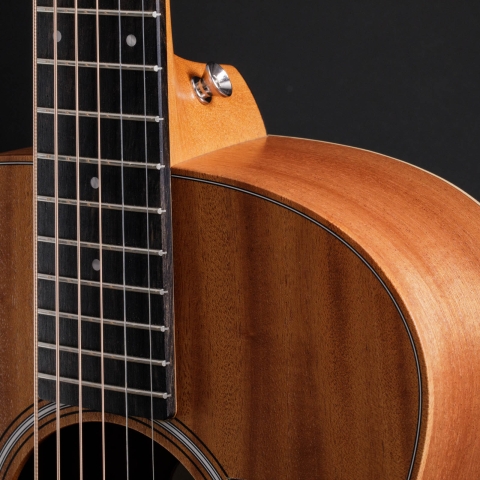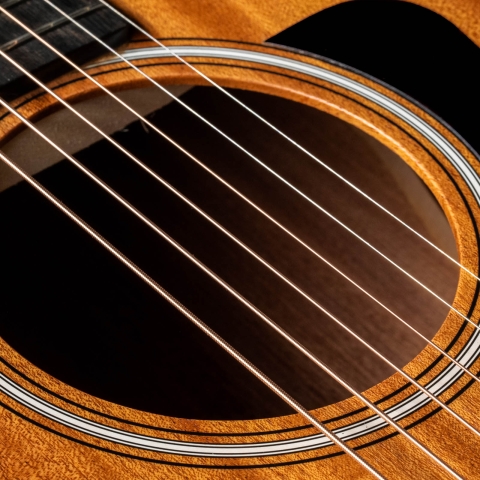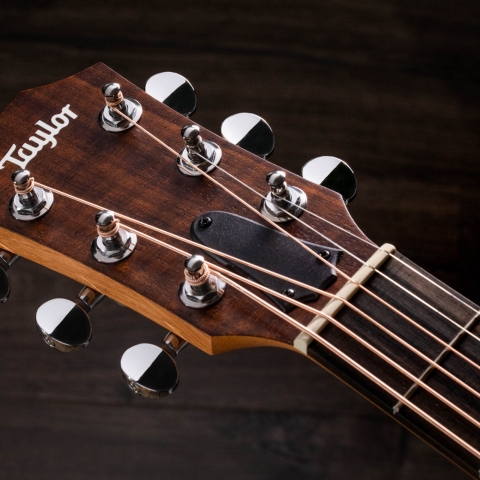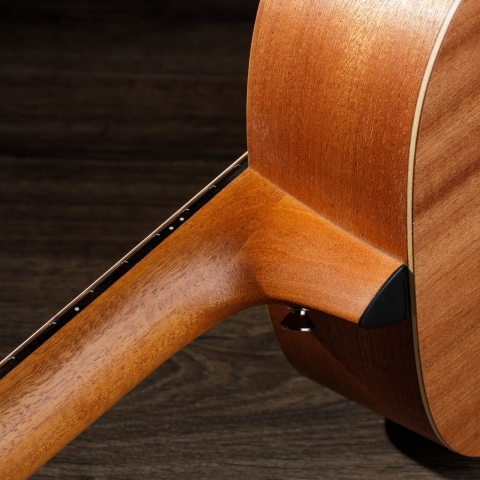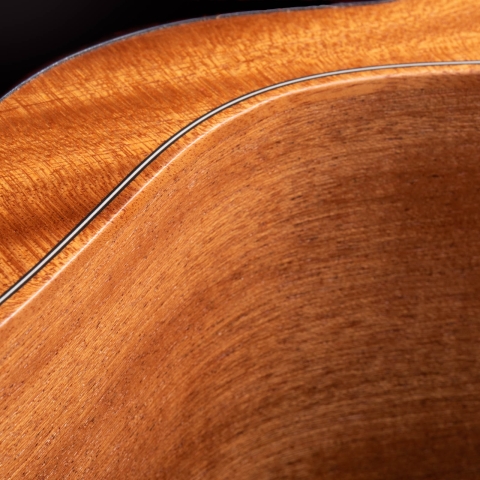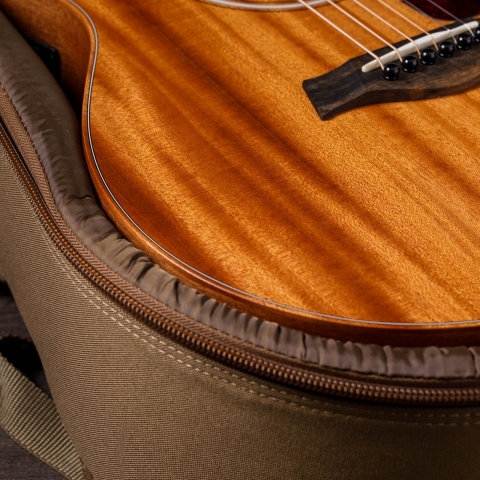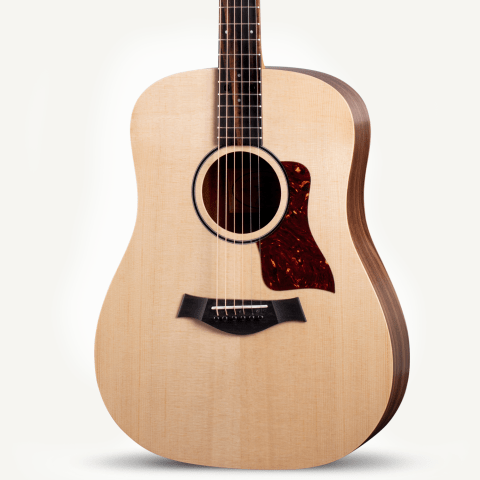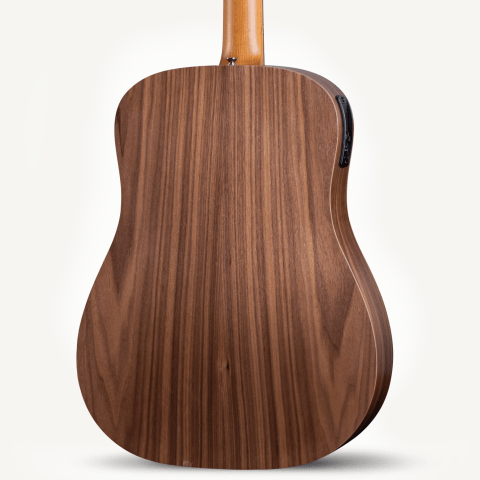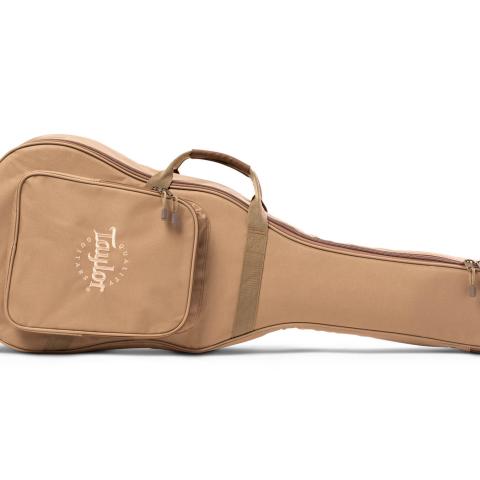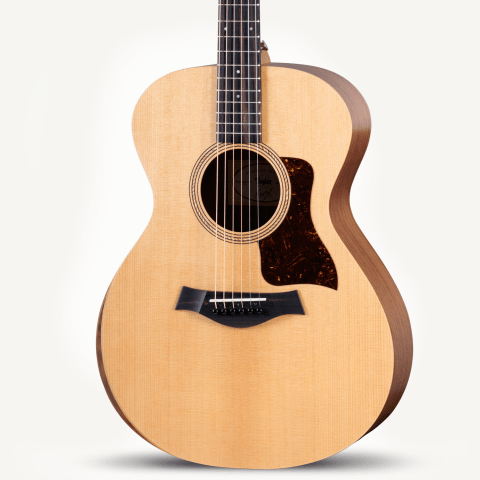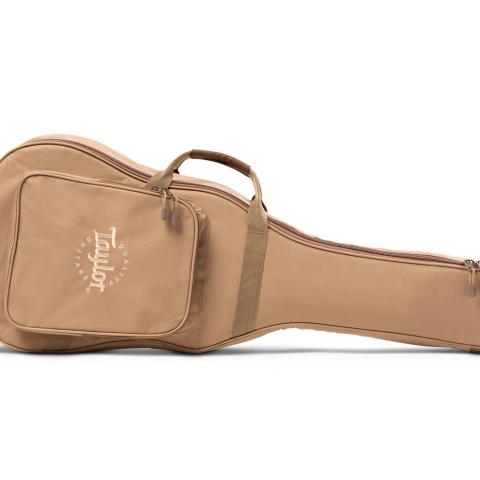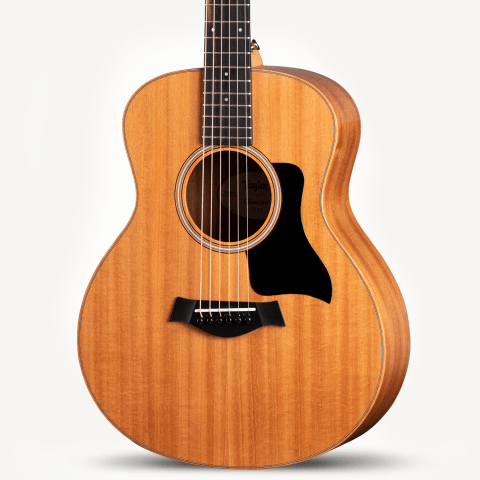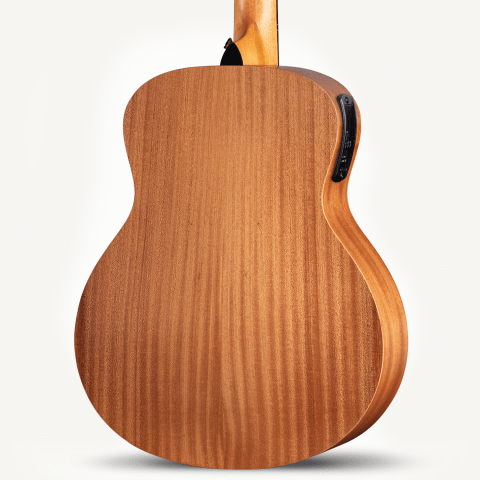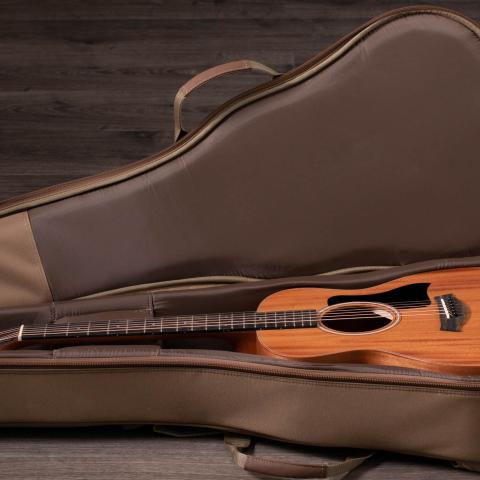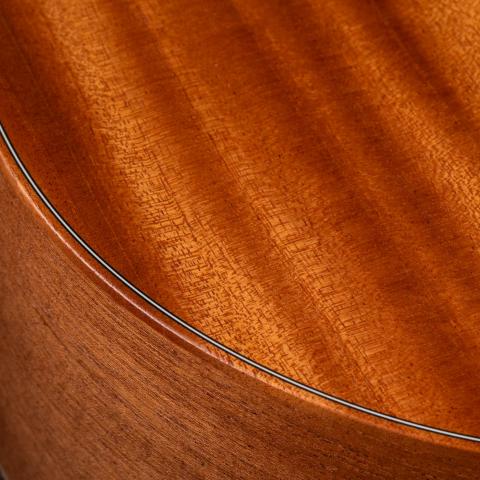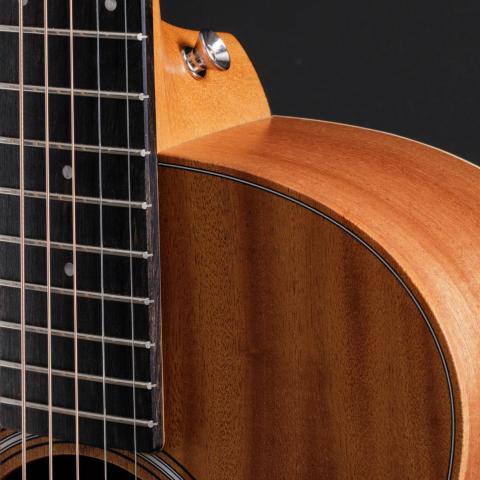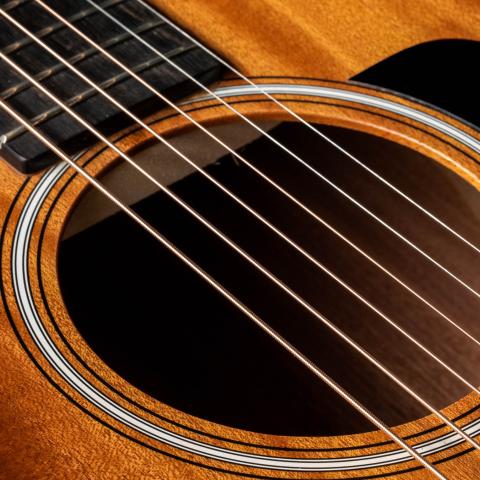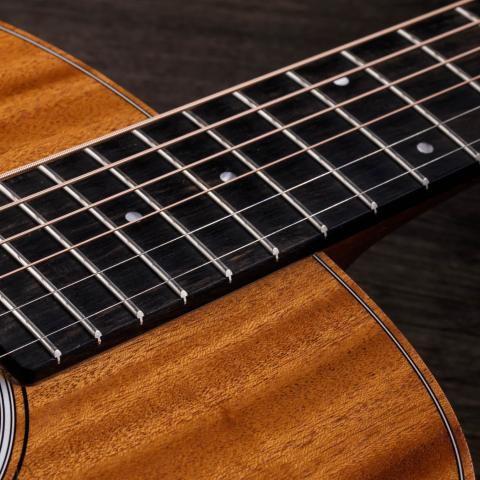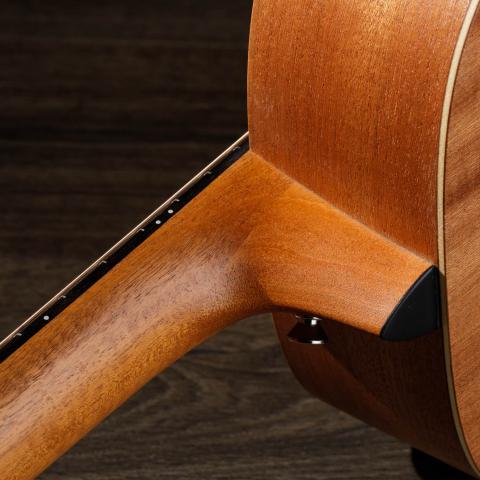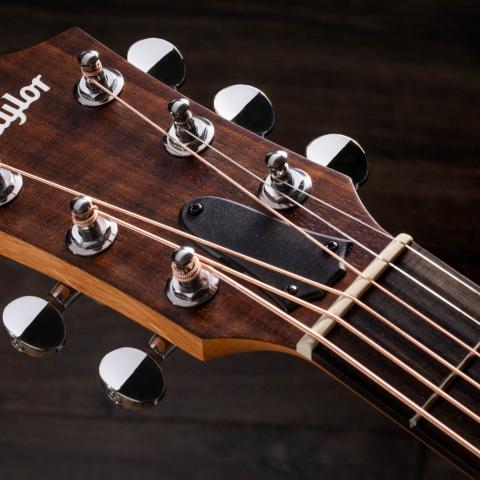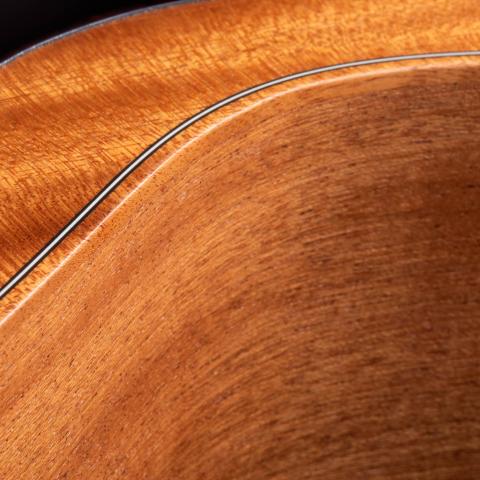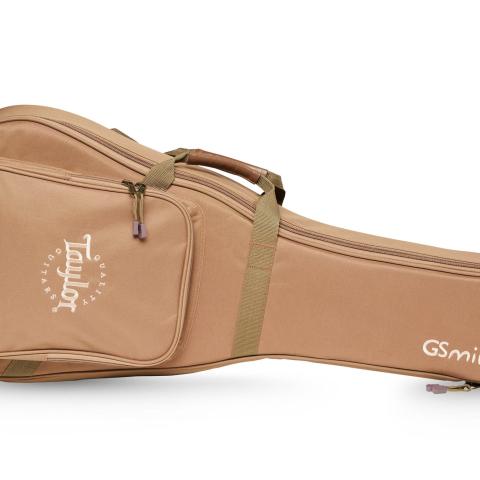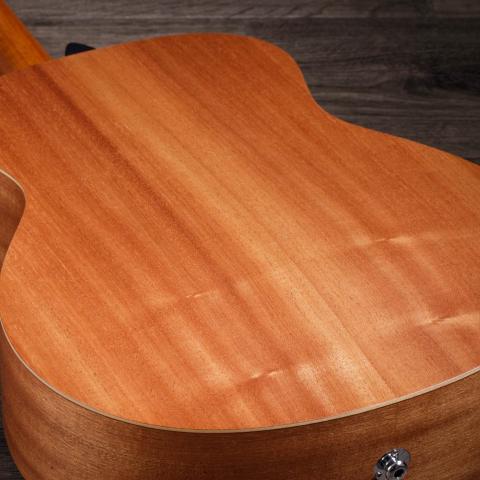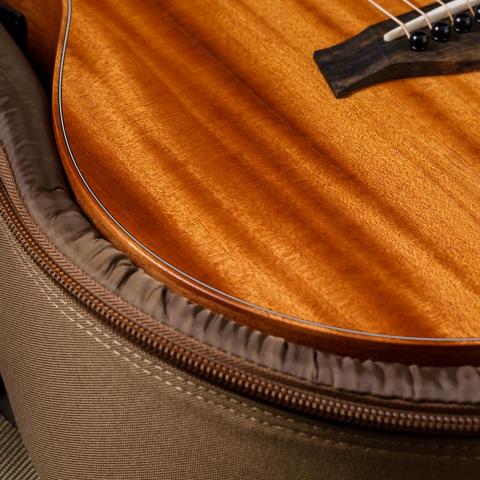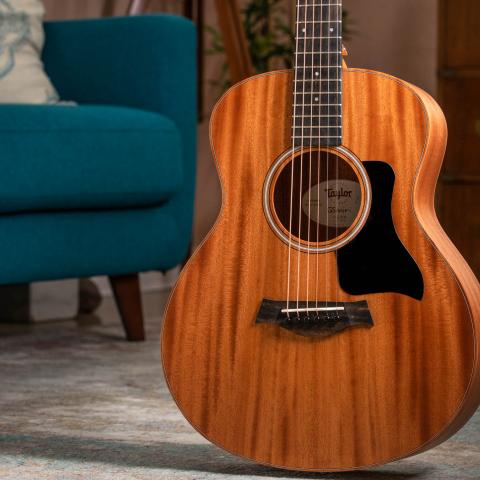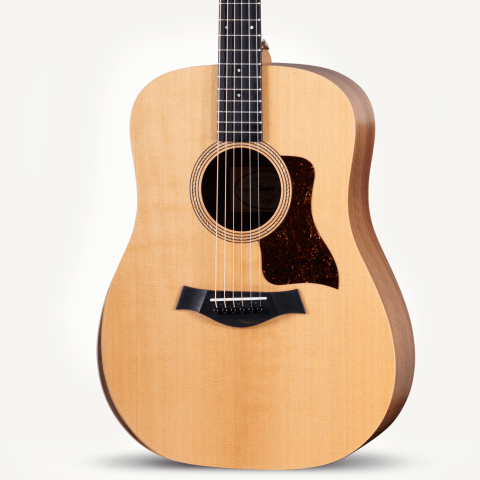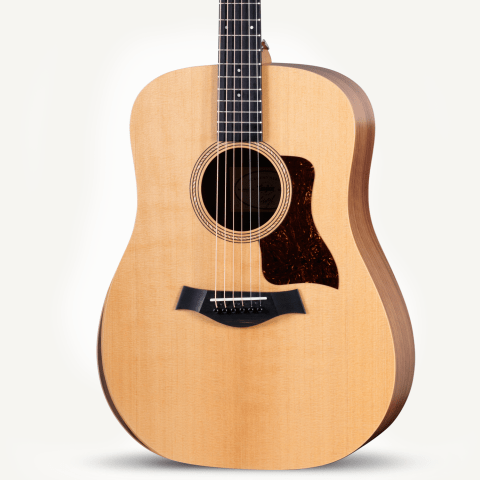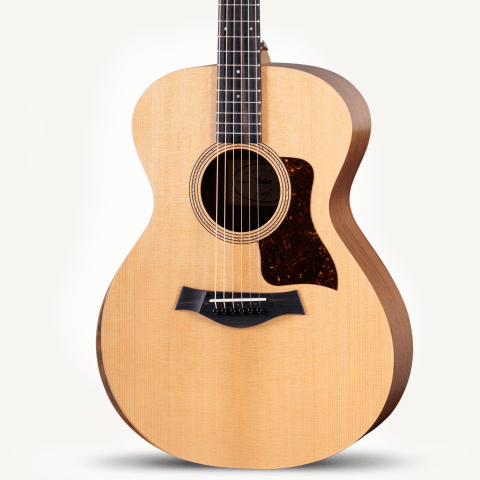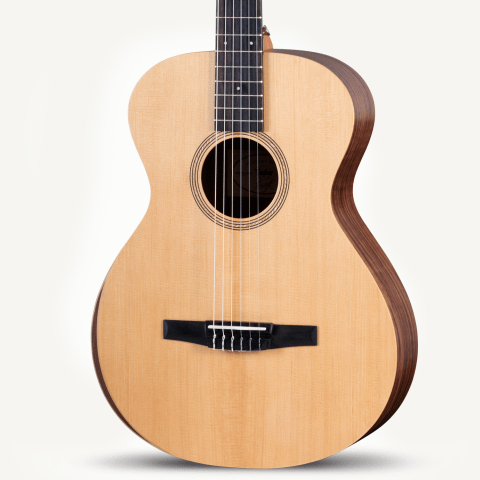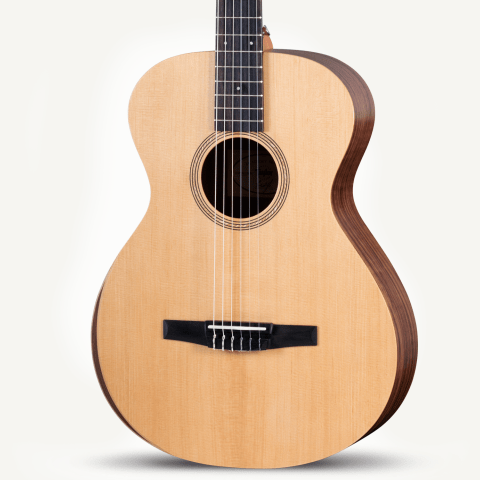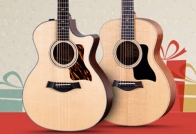
163 Acoustic Guitars
All models are available in a left-handed configuration at no additional charge, except most Builder's Edition models.
163 Acoustic Guitars
Shape
Body Wood
Top Wood
Series & Collections
Bracing System
Specialty
Cutaway
Neck Width
Electronics
Price
Every Taylor acoustic guitar includes a hardshell guitar case, padded gig bag, or AeroCase, depending on the model you purchase. Acoustic guitars from the 300 Series and above ship with hardshell cases, except for Grand Theater models ending in “1” (e.g., 811e, K21e), which include lightweight yet durable AeroCases. Most models from the Baby, GS Mini, Academy, 100 and 200 Series include gig bags, with the exception of DLX models, which include hardshell cases.
In addition to guitar cases, many Taylor guitars include electronics that allow you to plug in to an acoustic guitar amp, PA system, mixer or recording interface. These acoustic-electric guitars feature our ES2 electronics or the ES-B pickup.
Taylor guitars also come strung with D’Addario XS Coated guitar strings for steel-string models and D'Addario Pro Arte Carbon strings for nylon-string models. And of course, every Taylor guitar includes our world-class customer service.
Yes. We’re proud of the care we take to ensure each and every acoustic guitar that we build plays beautifully right out of the case. Every guitar goes through a rigorous inspection process after assembly before being fully set up by trained, certified guitar techs. The result is a guitar with a responsive, comfortable feel with easy-playing action and rich, clear sound every time.
Because of how our guitars are designed and built, every model is remarkably comfortable and easy to play. Between a range of body shapes to fit every type of player and our slender, hand-friendly necks, you’re guaranteed a great playing experience no matter which acoustic guitar you choose.
However, our Academy Series guitars were designed specifically with beginners in mind, blending bold, balanced sound with features selected to provide a truly accommodating feel to encourage new learners to practice often and grow their skills. In addition to their slim neck profiles, Academy Series acoustic guitars also feature built-in armrests for enhanced playing comfort, a feature usually reserved for much more expensive guitars. Academy Series acoustic-electric guitars also include a built-in digital tuner.
Other great beginner acoustic guitars include the GS Mini, the three-quarter-sized Baby Taylor (for younger students) or models from our 100 or 200 Series.
Steel-string Taylor acoustic guitars are built with a 15-inch fretboard radius, ensuring a comfortable, responsive feel for your fretting hand.
Nylon-string Taylor guitars feature a 20-inch fretboard radius. The flatter curve of our nylon-string fretboards helps accommodate the phrasings and fingerstyle arrangements typically used by classical players and other musicians who are likely to utilize a nylon-string guitar.
Serial numbers can be located in different areas, depending on the age and model of the guitar. You can use this guide to help locate your guitar's serial number.
Acoustic Guitar (1999 - present):
Serial numbers for Taylor acoustic guitars built after 1999 are found on the guitar's back label, visible through the soundhole.
Acoustic Guitar (1998 and older):
Serial numbers for acoustic guitars built prior to 1999 are located on the heel block of the guitar. They can be found by looking into the soundhole and up toward the neck of the guitar.
T5, T5z and T3:
Serial numbers for T5, T5z and T3 guitars are visible through the guitar's bass-side F-hole.
SB/Solidbody:
Serial numbers for the Taylor Solidbody electric guitars are found on the bridge adjustment access panel on the back of the guitar. The number is etched directly into the panel.
Necks and bodies matching the original specs are available as replacement parts either through a certified service center or by sending the guitar to our factory service centers in El Cajon, California, USA or Amsterdam, Netherlands. We prefer to save the original parts whenever possible, but a replacement could be a good option if the original part is beyond repair. Forfeiting the original neck or body is part of the deal.
Most parts are made to order and take about 8 weeks to complete. For pricing and availability, please email the serial number of the guitar to our customer service team.
If you recently bought a new Taylor guitar, you’ll find most of its specs on its product page here at TaylorGuitars.com. You can use our Browse tool or the search bar to find your model’s page.
We are happy to provide our customers with as much information regarding their guitars as possible. However, our records are not exhaustive, particularly going back to Taylor's earlier history (we were established in 1974).
For most models post-2000, we can provide model specs. For guitars built-pre 2000 and some early custom models, we have limited information available as we didn't keep comprehensive digital records back then, but we are happy to assist with what we do have.
For specs on your guitar, please email the serial number to our customer service team.
We always recommend a few important guitar accessories when you buy a new guitar.
- Guitar humidifier: Acoustic guitars need to be kept properly humidified, or they risk becoming damaged. Without proper humidification, your guitar can warp or even crack. Neck problems can also result from a lack of proper humidification, affecting the playability of your instrument. We recommend keeping your guitar in its case with a case humidifier like the D’Addario Sponge Humidifier or their Humidipak system. A digital hygrometer can also help you track and maintain proper humidity levels.
- Replacement strings: No matter your skill level, you’re going to need new guitar strings eventually, and there’s nothing more frustrating than breaking a string a few minutes into a practice session and not having a replacement to keep you going. We string our steel-string guitars with D’Addario XS Coated Phosphor Bronze strings.
- String winder: While you’re thinking about strings, grab yourself a string winder and take the strain off your wrist when you’re changing out your strings.
- Guitar strap: Many new guitarists practice while seated, but eventually you’ll probably want to be able to stand and play like a true star. The TaylorWare shop offers a wide range of guitar straps that are both durable and comfortable for long playing sessions.
- Guitar picks: Picks are an essential tool for many guitarists, and as almost any player will tell you, they have a way of vanishing. Grab yourself a variety pack and try out picks of different materials, sizes and gauges to find the combination of sound and feel that suits you.
- Capo: A capo is a device that attaches to your guitar’s neck, changing the guitar’s natural key. Capos are especially useful for playing with other musicians or vocalists.
- Guitar polish and cleaner: Keep your guitar looking as good as new with a polish or cleaner and a quality microfiber cloth that won’t leave smudges or scratches on your guitar’s finish. We recommend a cleaner for satin-finished guitars, a polish for gloss-finished guitars, and a fretboard oil for keeping your fretboard supple and hydrated.
- Guitar tuner: Unless your guitar has a built-in tuner, we recommend a quality tuner like the Taylor Beacon, which also includes a metronome, timer and flashlight. Clip-on tuners like the Beacon are easy to use and tend to be more accurate than the tuners you can install on your phone.
Guitars are complex systems of interrelated parts, each contributing to the guitar’s playability and sound in unique ways. At Taylor, we pride ourselves on utilizing premium tonewoods and materials for every part of the instrument, from the critical woods used for the top, back and sides to the less visible but no less important parts inside the guitar such as bracing and kerfing. Higher-quality materials equate to better sound quality, durability and playing comfort.
If you want to learn more about how different woods affect sound, explore our tonewood guide in digital Wood&Steel.
The primary difference between an acoustic guitar and an acoustic-electric guitar is the inclusion in the latter of electronics that allow you to plug the guitar into an amp, PA system or recording interface. These electronics usually consist of a pickup (which detects the vibration of the strings and turns it into an electronic signal) and a preamp (which adds power to that signal so that it can be sent to an amp). At Taylor, most of our acoustic-electric guitars (which comprise most of our guitar lineup) includes the ES2 (Expression System 2), which features a piezoelectric pickup placed behind the guitar’s saddle. Other models are built with the ES-B system, which boasts an onboard digital tuner. Acoustic-electric guitars typically include volume and tone controls to help you hone your sound.
An acoustic-electric guitar makes it easier for players to perform in amplified settings or recording scenarios, eliminating the need for a microphone to capture and boost sound. Special acoustic guitar amplifiers are highly recommended for players who want to plug in, as electric guitar amplifiers will struggle to faithfully reproduce the depth, resonance and harmonic texture of an acoustic guitar.
A cutaway is an additional curve built into the bottom side of the upper bout (located where the body meets the neck). It’s called a “cutaway” because compared to a traditional acoustic guitar, a cutaway model appears to have a small portion of the guitar “sliced” away.
Cutaways are primarily featured on acoustic-electric guitars and add the benefit of making it easier for the player to access the guitar’s highest frets, creating a wider pitch range with less effort from the player. This is particularly useful for playing solo lines and leads, which often incorporate the higher part of the guitar’s musical range.
The cutaway does not have a measurable effect on the guitar’s sound.




